TWO HOURS WITH PLANTS, INSECTS AND SOME OTHER STUFF IN THE MUDDY BAY
It started in the shape of a heart ...
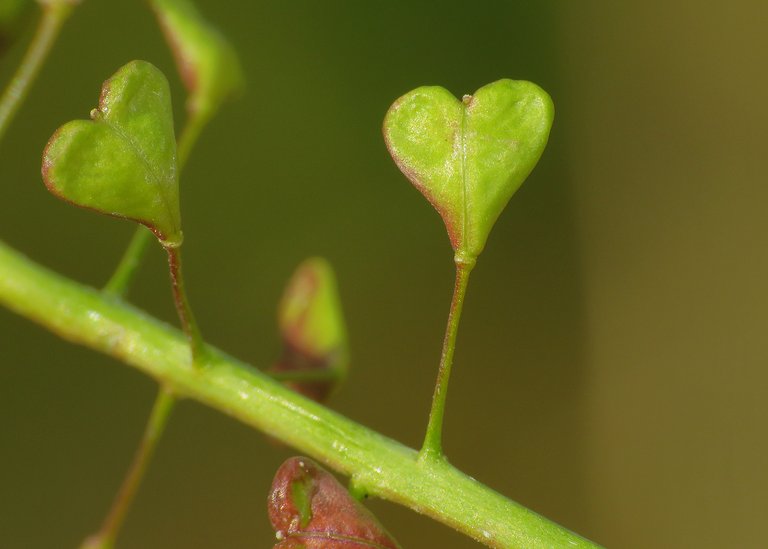
... with these lovely heart - shaped fruits ...
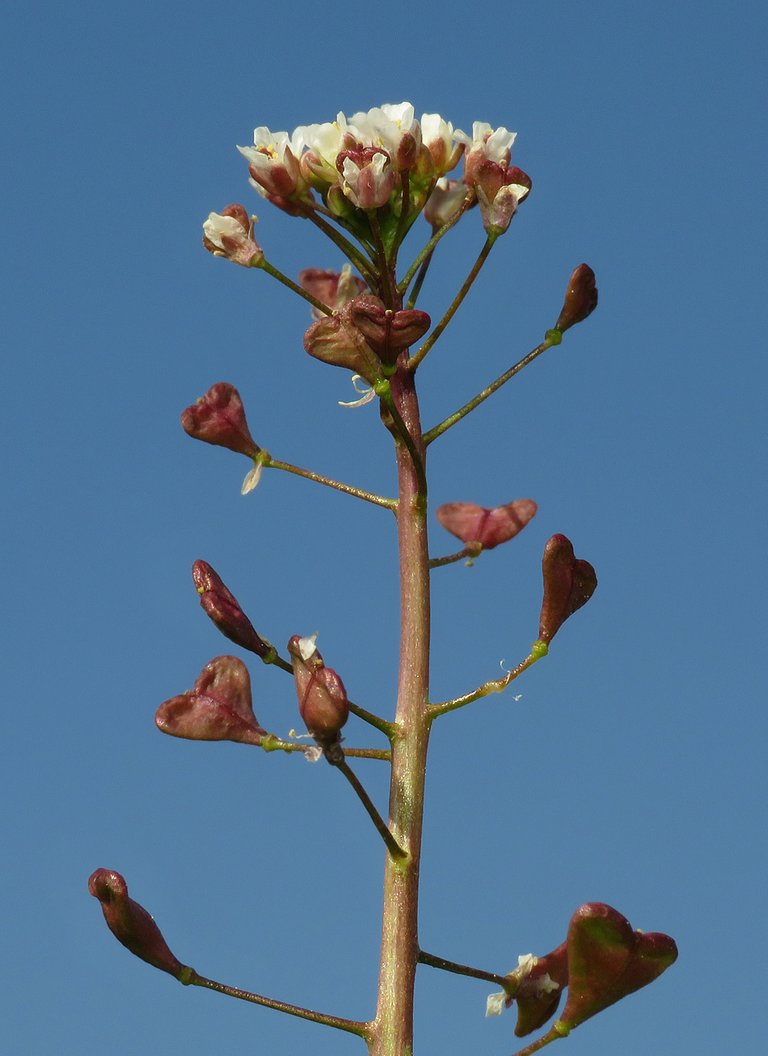
... of the Capsella bursa-pastoris plant ...
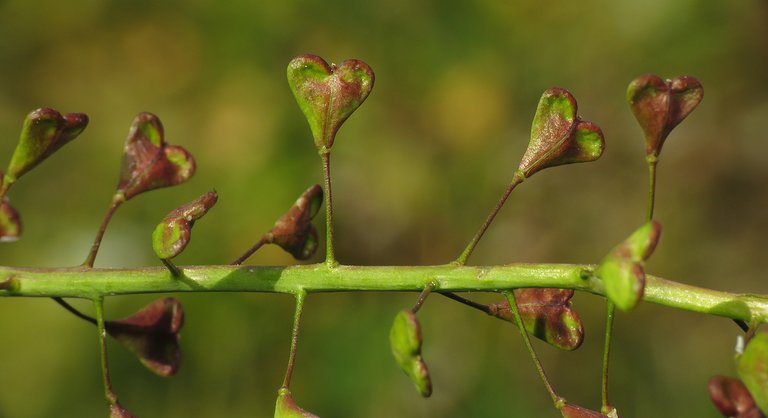
... commonly known as Shepherd's Purse, an edible plant with some medical properties as well, it's great to stop the bleeding. Fresh young leaves are great, healthy food with a broccoli - like taste ... the tiny fruits and seeds have more intense taste, a bit like mustard, and are best used as spice.
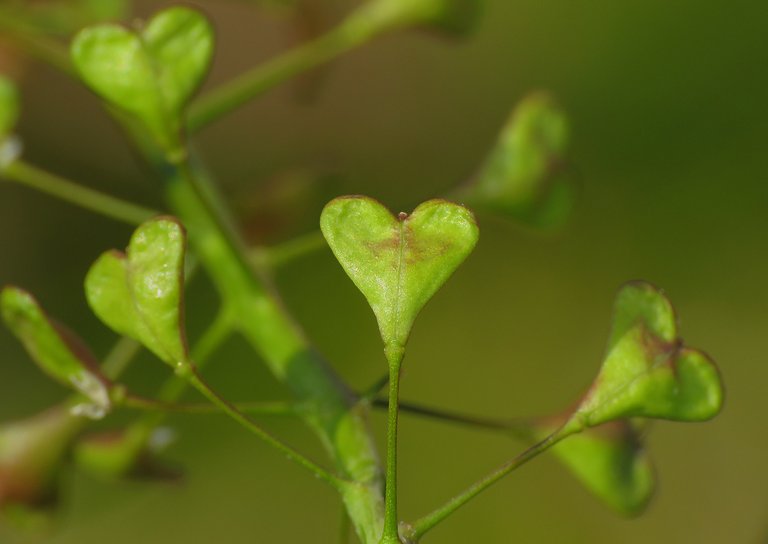
The lower surface of the iconic little fruits is green ...
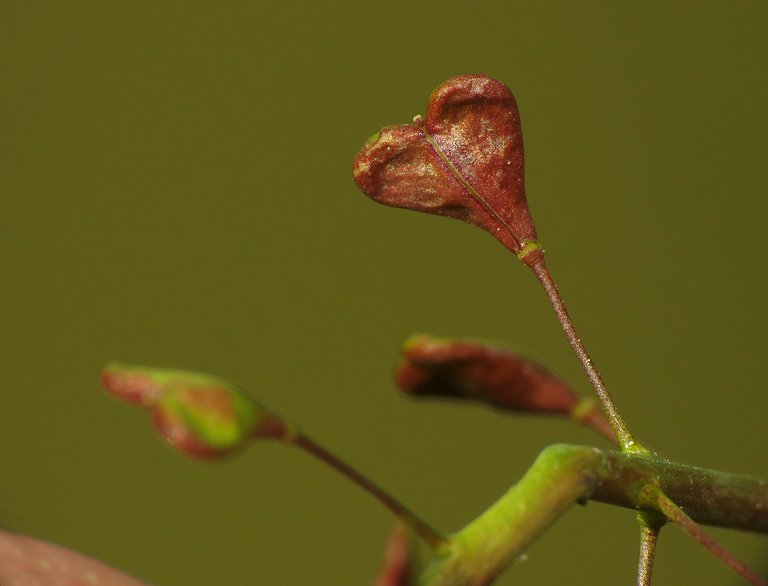
... while the upper one, more directly exposed to sunlight, has a reddish tinge ...
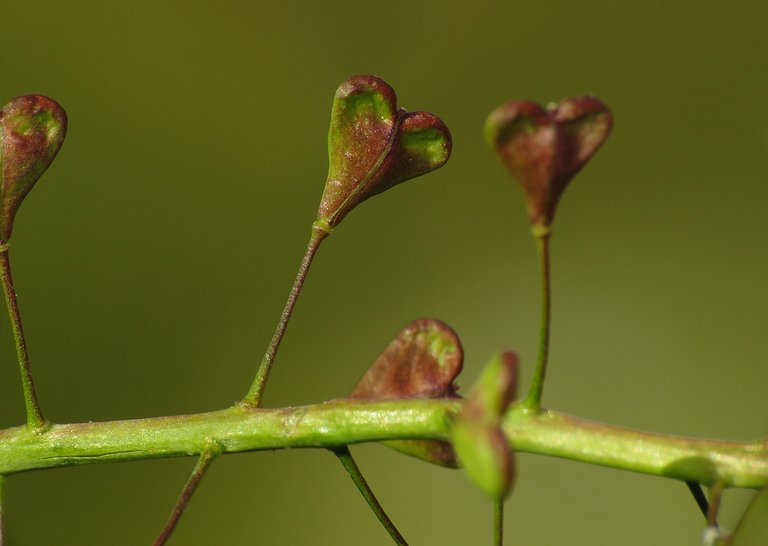
... but this, actually depends on the weather conditions and the place where the plant grows, these fruits are colored with a mix of green and red.
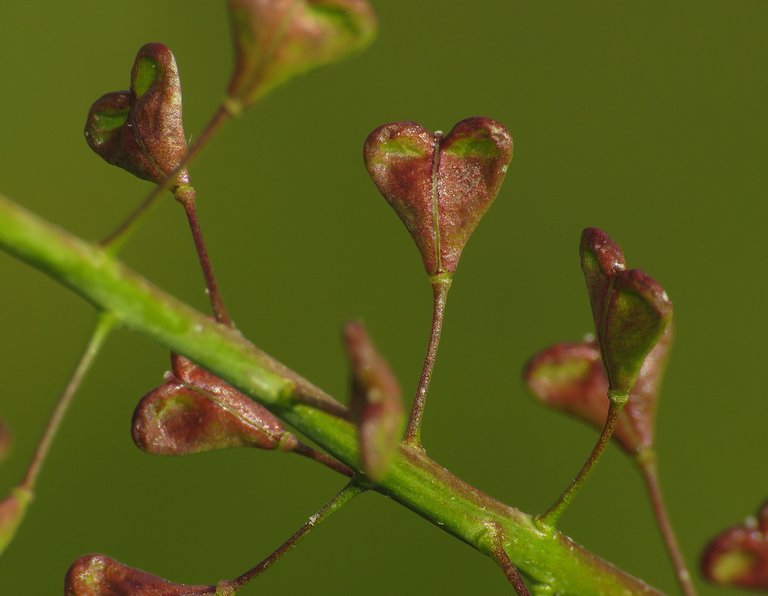
These have an interesting red - green combination that makes them look a bit like some red alien faces with green eyes staring at me.

This is just another group portrait of the fruits ... with the flowers blurred in the background ... on the following photograph ...
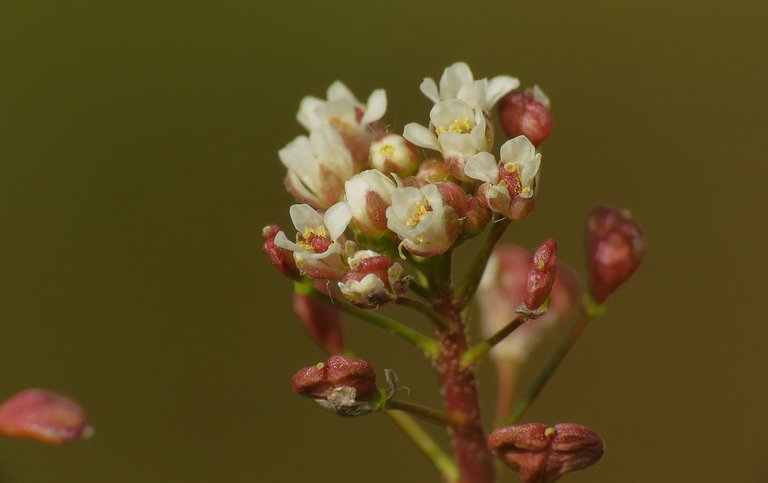
... you can take a better, more focused look at the Shepard' Purse tiny flowers.

This dandelion - like Hawk's-beard (Crepis sancta) was growing nearby ...
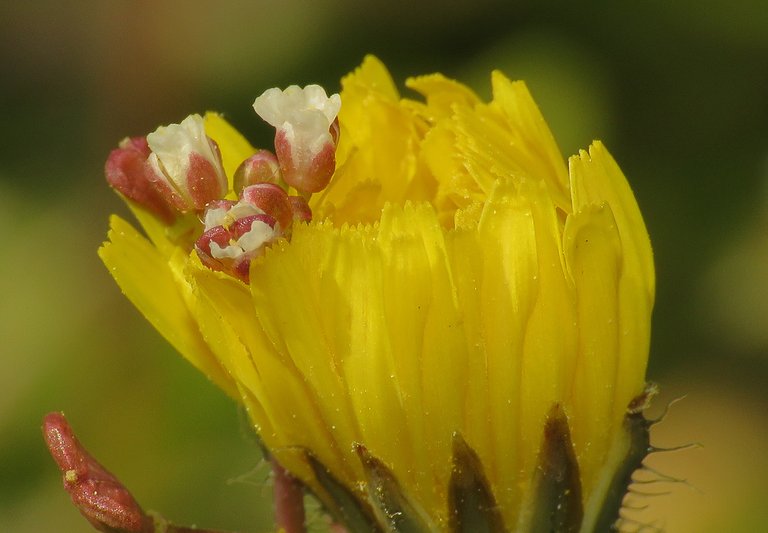
... with another Shepard's Purse leaned against its yellow flower ...
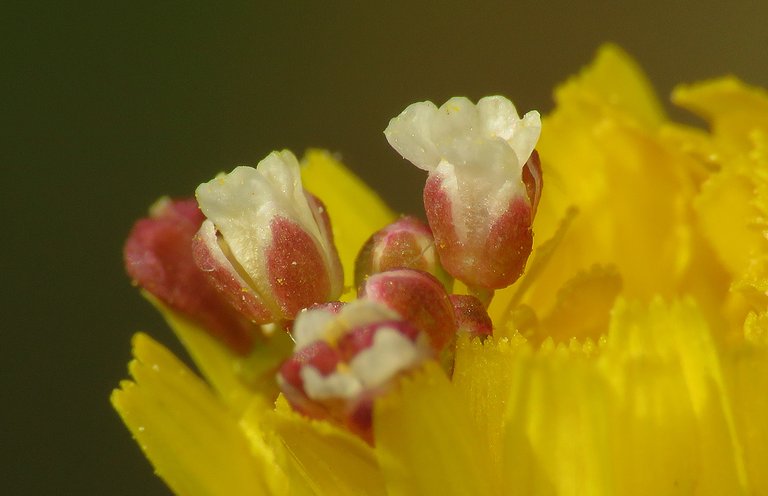
... this was an extremely lovely combination, so I had to take a few shots. Just like the similar looking Dandelion, The Hawk's-beard it's an edible plant with tasty young leaves.
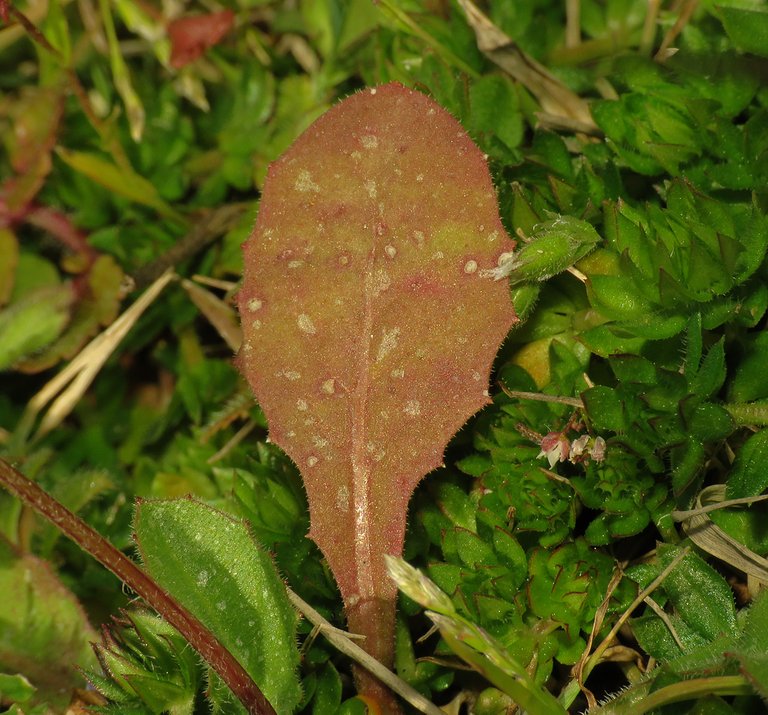
This is a young Crepis sancta leaf that turned reddish from sudden temperature stress, from frosty to summer - like in the same day.
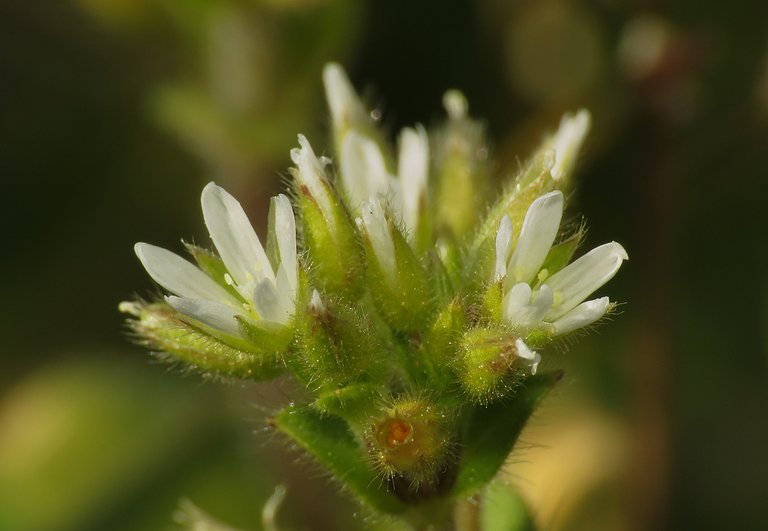
These are the small white flowers of the Cerastium glomeratum plant.
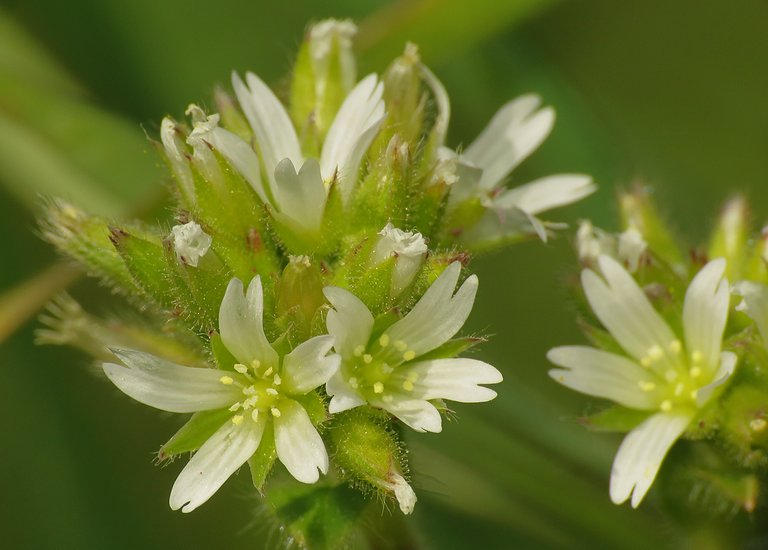
Today I found out that this plant has a surprisingly long common name in English ... It goes like this :D - Sticky mouse-ear chickweed, it's a very descriptive name that kind of says all that has to be said.
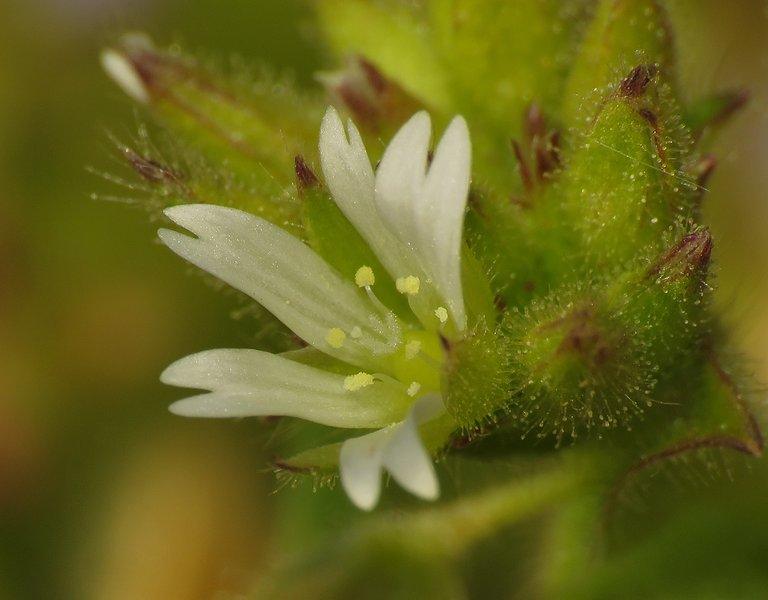
This is yet another edible plant that grows in the same small, a square meter - or - so area, among Shepard's purses ...
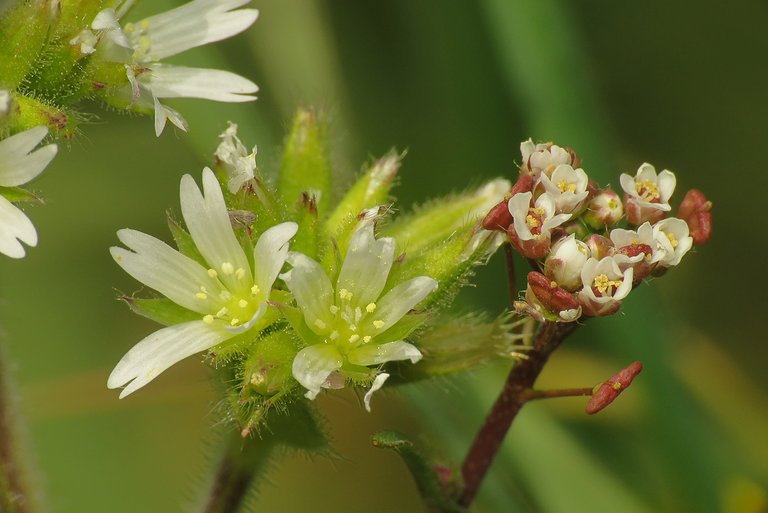
... here you can see the two very close to each other.
The leaves and young sprouts are good wild food. Traditionally, the juice of this plant was used by applying to the forehead to relieve headaches ... or was dropped into the nostrils to treat nosebleeds.
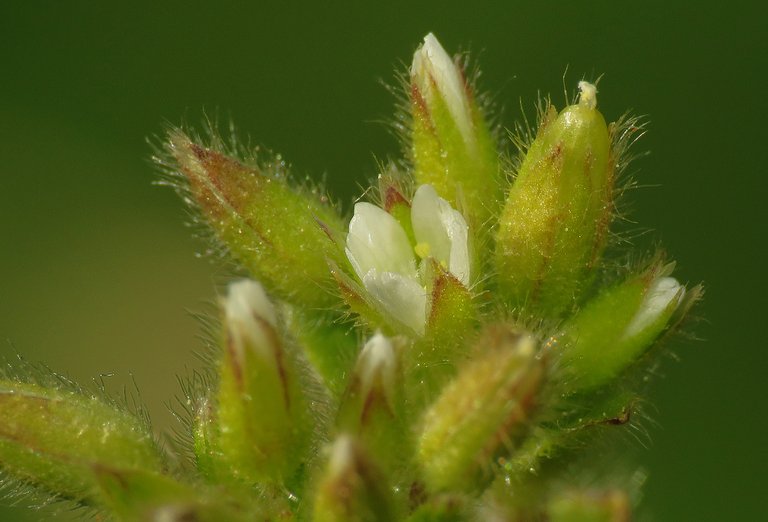
Here you can see one tiny flower that just started to spread its petals ... surrounded by buds that will also turn into flowers soon.
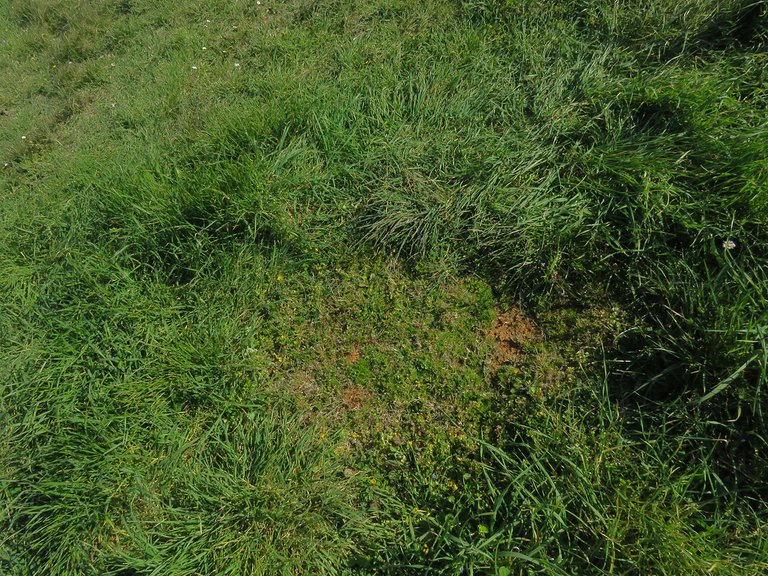
I photographed all these plants on the small patch of terrain that looked kind of cultivated in comparison with the surroundings covered with considerably taller grass ...

... and in fact, this little garden was created through intense ant activity, there is a large and complex ant's nest underneath, and ants were busy doing their stuff while I was photographing the plants.
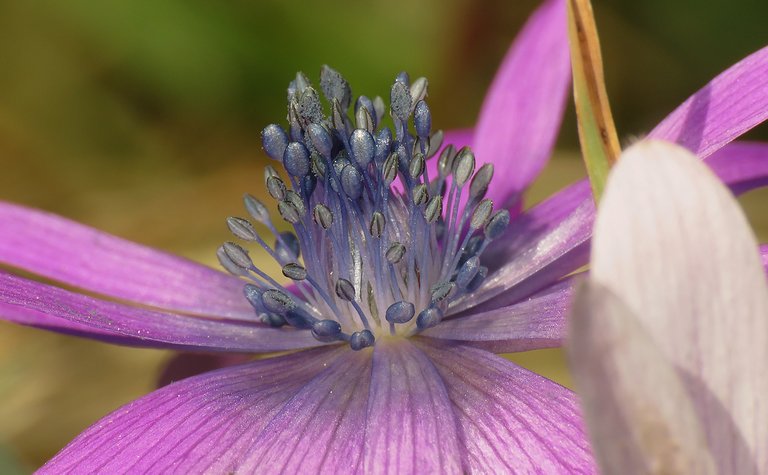
These Anemone hortensis ...
... were growing surrounded by taller grass. The color of these flowers vary, and here you can see the pale, and the more intensely colored version very close to each other.
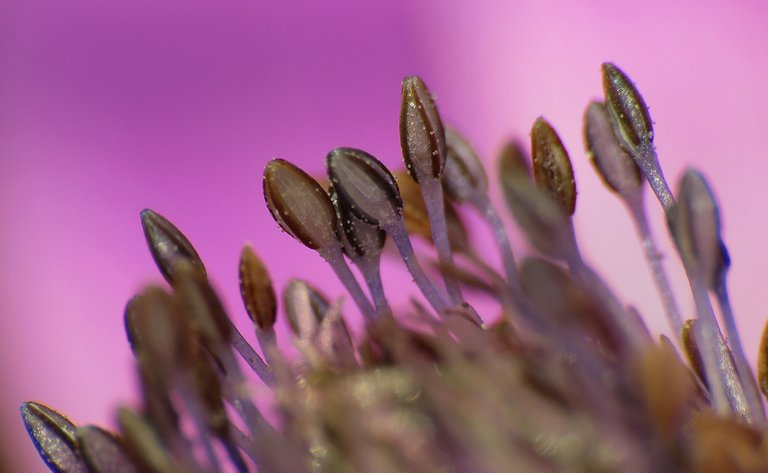
The pollen - covered details from the flower's center are very beautiful in macro view ...
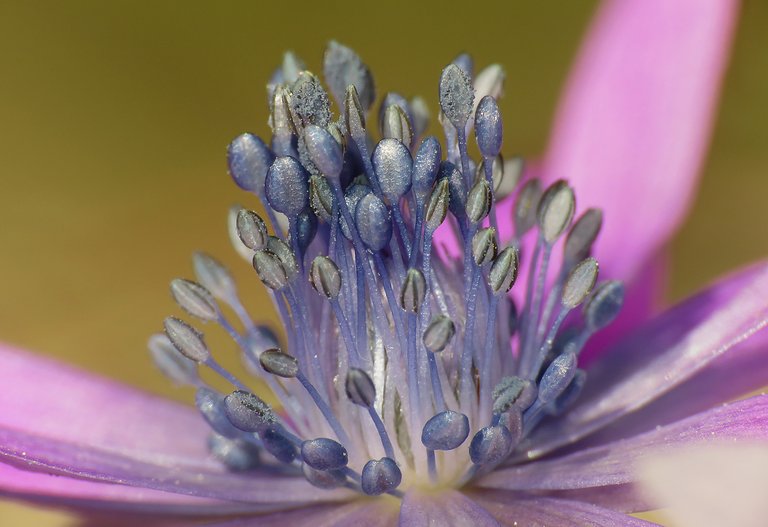
... it's like looking at some strange, alien forest miniature.
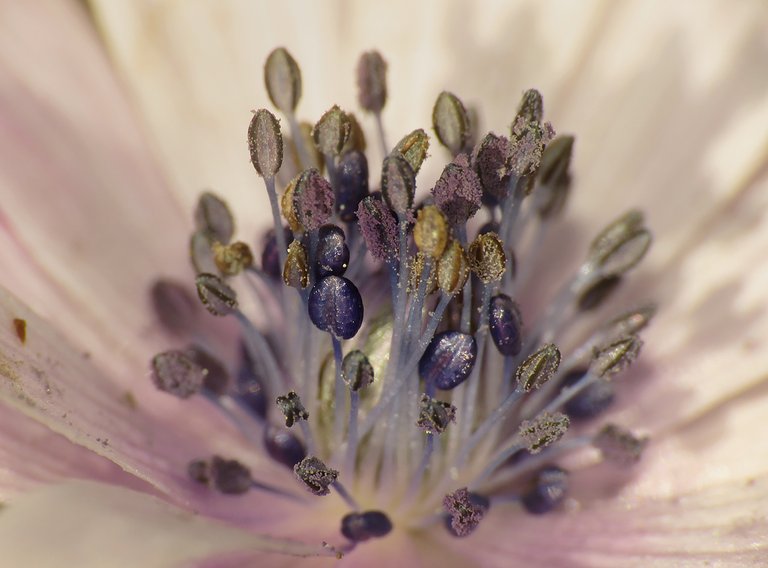
Anemone hortensis it's a poisonous plant.
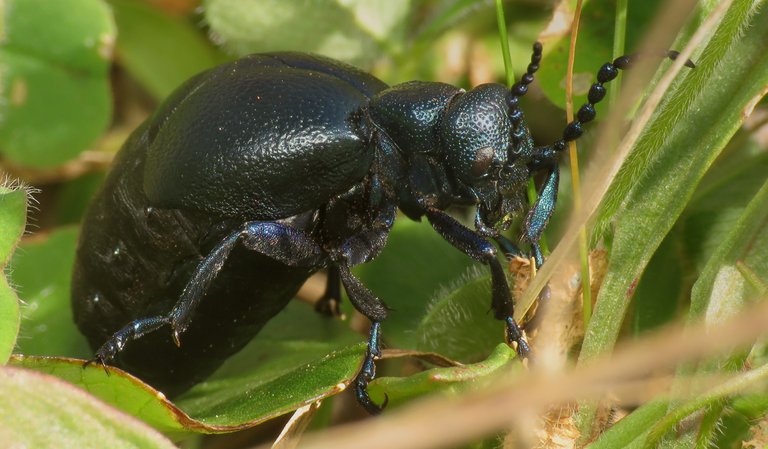
Not far from there, also in the taller grass, I found this Meloe violaceus beetle. These insects feed on pollen and usually appear very early in spring. The larvae live a parasitic life, primarily in the nests of solitary bees, or sometimes of locusts.
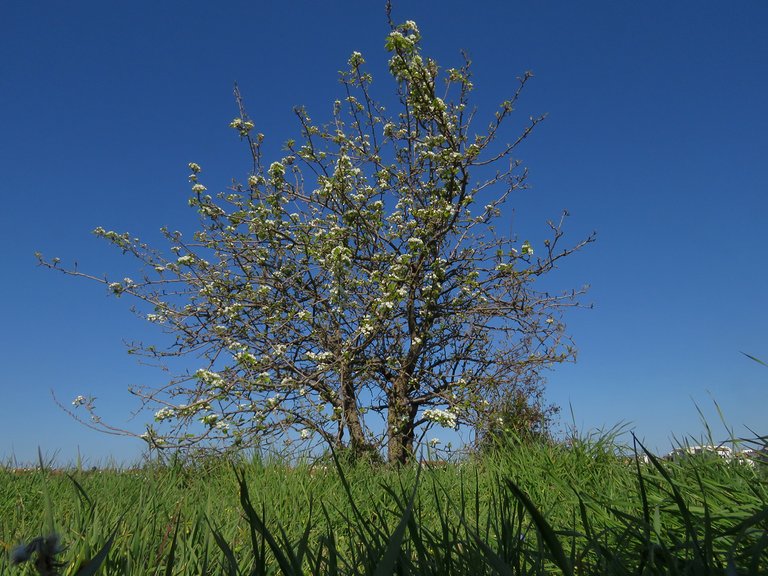
This Wild pear (Pyrus pyraster) has grown at the edge of the meadow ... some meters further, but out of sight from this angle, is the shallow sea of the bay.
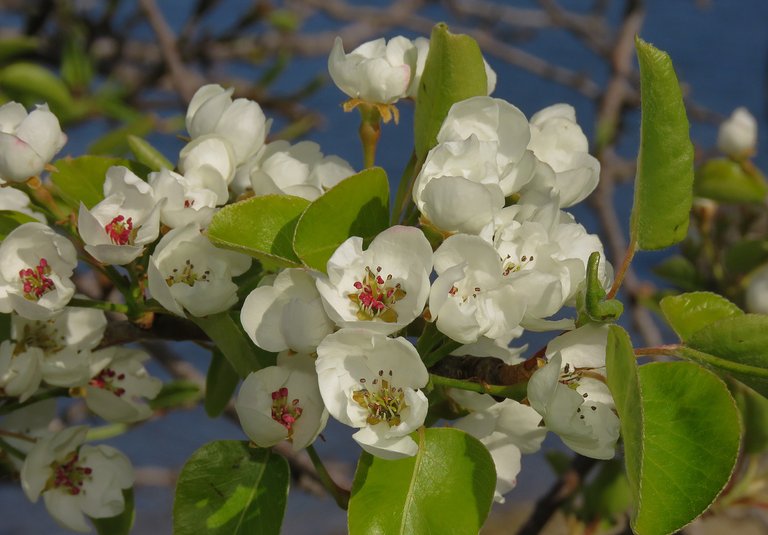
The tree was covered with beautiful flowers ...
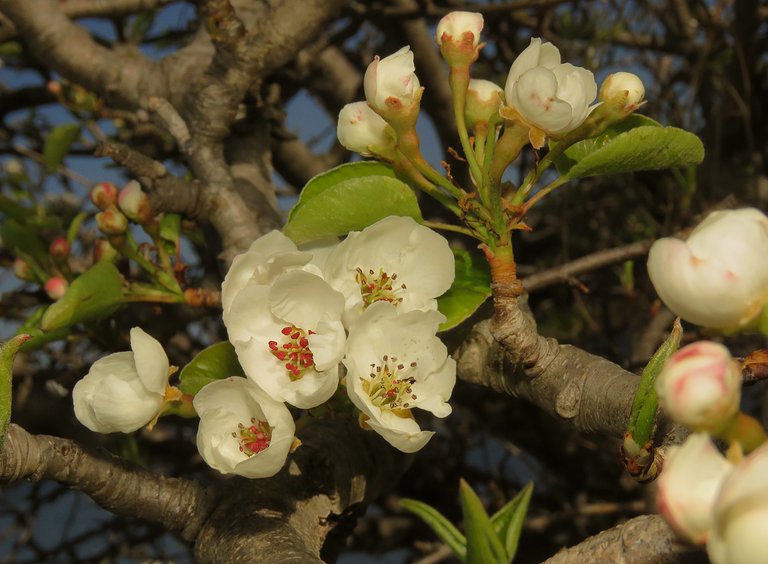
... I like this elegant combination of white petals ...
... and little red details in the flower's center, very much.
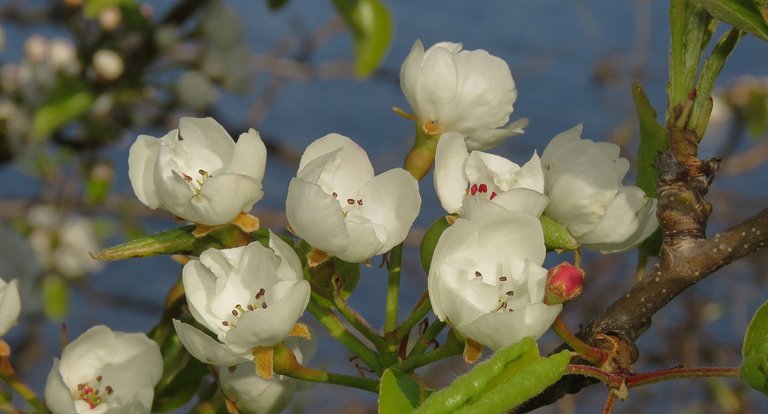
When these flowers develop into fruits ...
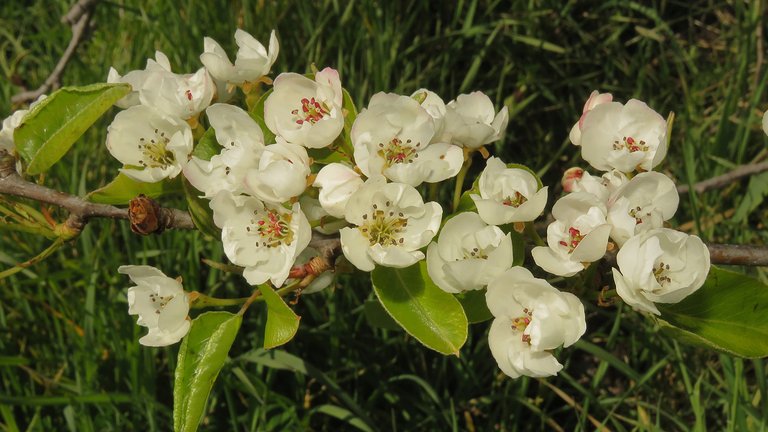
... the fruits have a sweet taste and are edible only when they are extremely ripe, almost rotten and fall from the tree. A great, dense and grainy marmalade can be made from those. After taking these Wild pear shots ...
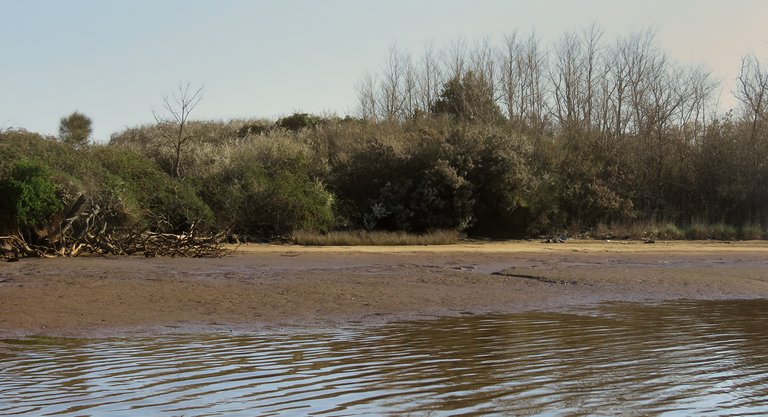
... I decided to take a walk along the shore ...
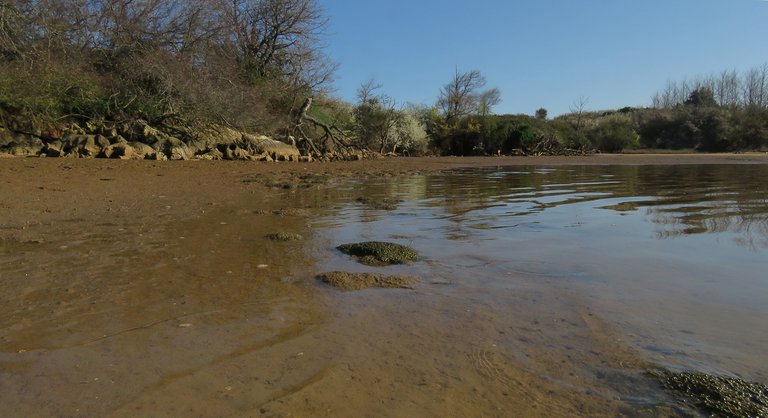
... the tide was very low, and large muddy areas usually covered with water were now exposed ...

... so I was able to take a few shots of the marine life ...
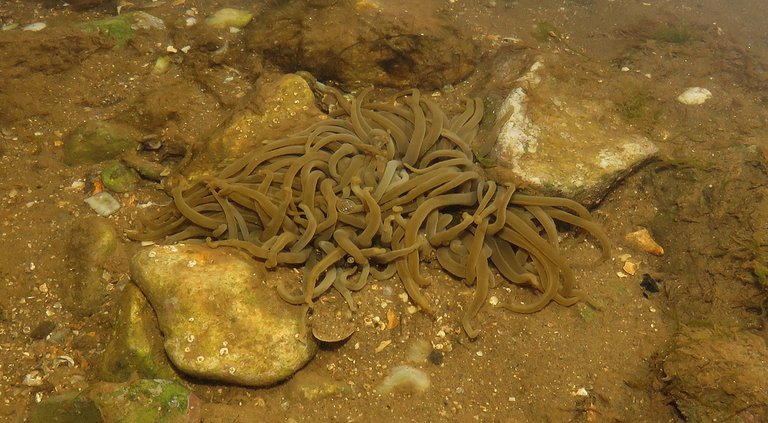
... this is the Snakelocks anemone (Anemonia viridis) a very widespread species in shallow, coastal waters. These Sea anemones are edible ... and very, very tasty, especially when fried like little croquettes that taste like calamari, but with stronger sea aroma. Traditional were picked during the low tide ... I remember some early expeditions with my Grandma when I was a very small child and enjoyed walking barefoot through the soft mud ... a thing that I still enjoy and do regularly in the warm part of the year.

Sea snails and hermit crabs were patrolling the very shallow water ...
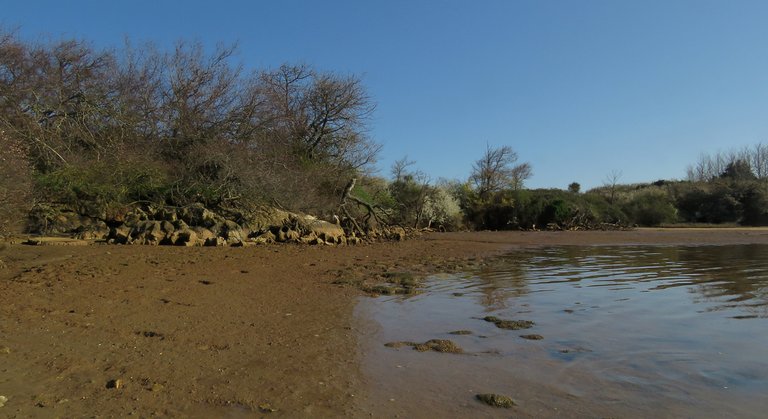
... and just a bit further ...
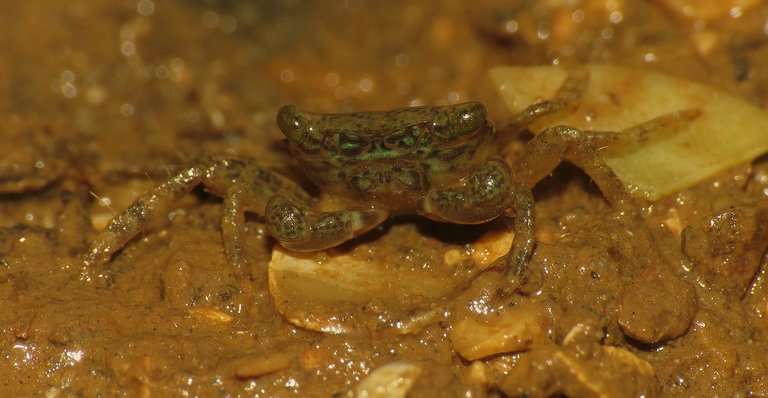
... now out of water, I found a small achygrapsus marmoratus crab ...
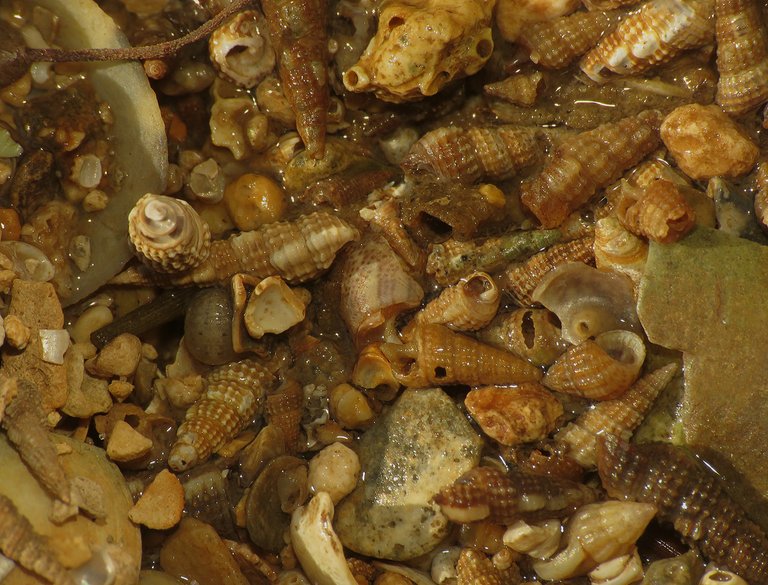
... and a multitude of minuscule empty shells mixed with grains of gravel.
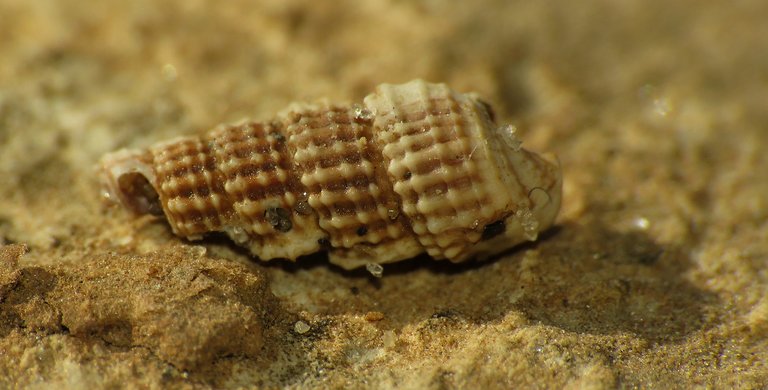
I singled out a few pieces to put on separate photographs ...
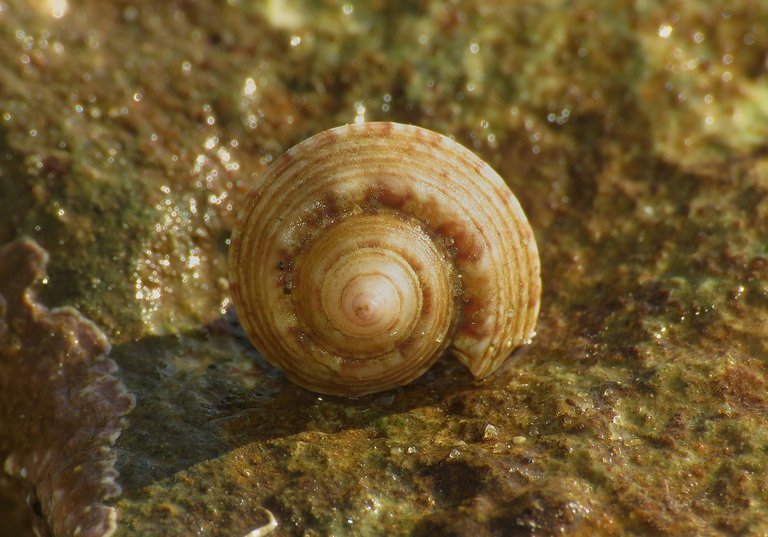
... like this elegant spiral, ad example ...
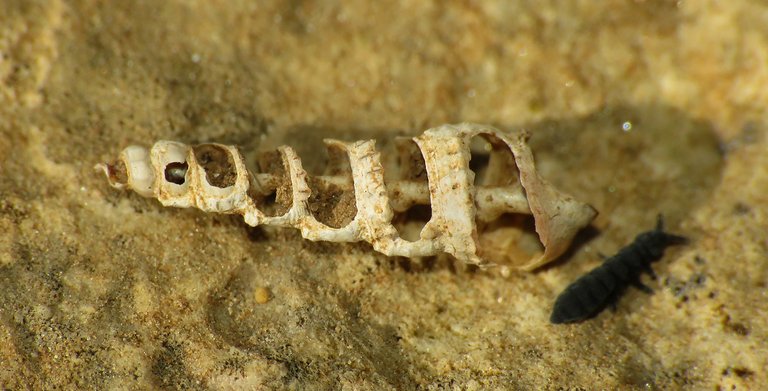
... or this decaying shell that shows its interior architecture. You can see a small creature, blurred in the lower right corner of the shot ...
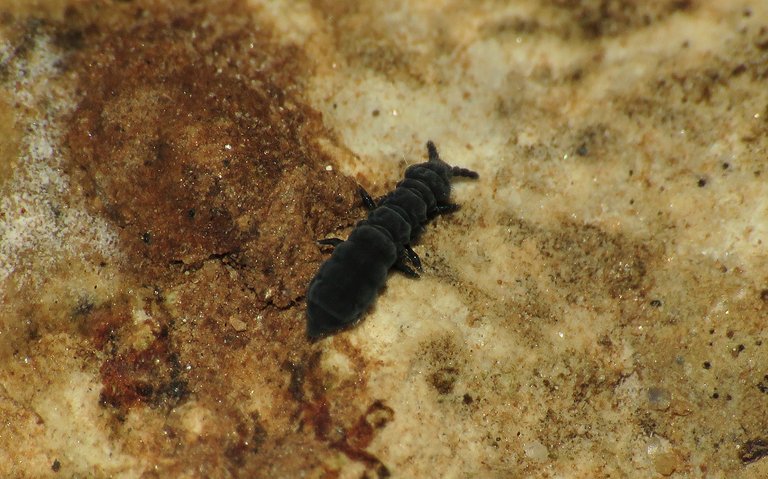
This is the Anurida maritima, an interesting springtail species. They are air - breathing animals very well adapted to this changing coastal habitat. This one was running across the coastal rock, but they can also float on the surface of water thanks to the air bubbles trapped by the hair that grow on their body.
They are also capable of surviving underwater by breathing those bubbles of air.
These springtails are very small, almost more micro than macro size, and they were always in motion, so I spent a good chunk of those two hours from the title, trying to get this single shot.
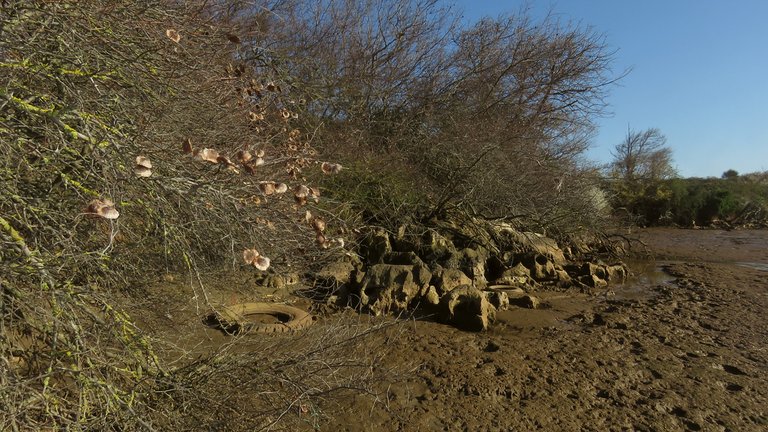
Someone threw a few old car tires to decorate the muddy coast. They are well displayed at low tide ... it's a six hours exhibition before the sea returns.
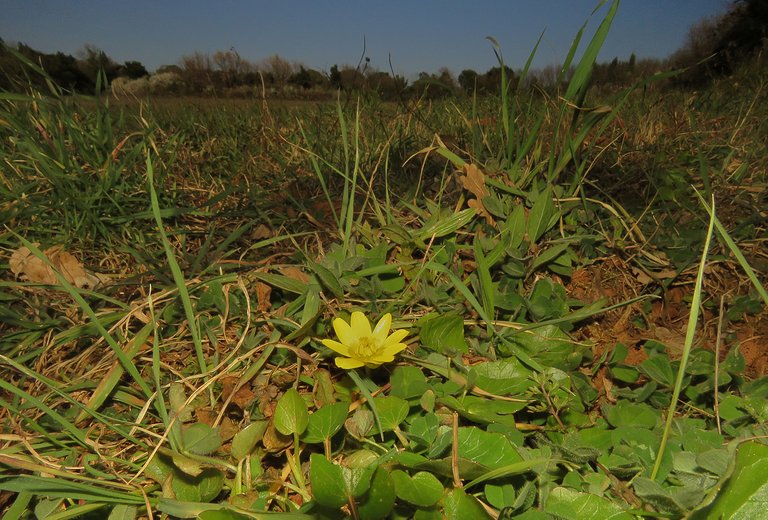
With this shot I'm back on the coastal meadow ... ... the yellow flower in the foreground ...
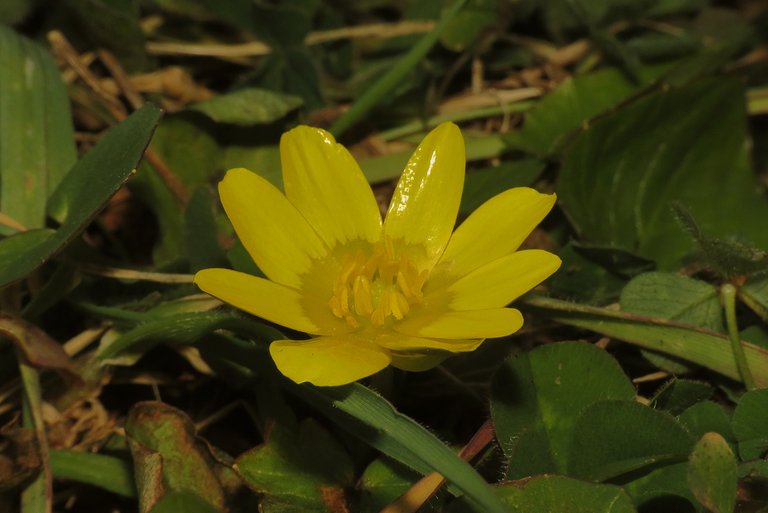
... it's a flower of the Ficaria verna ... the young leaves and roots of this plant are edible, but not raw ... the older leaves are toxic.
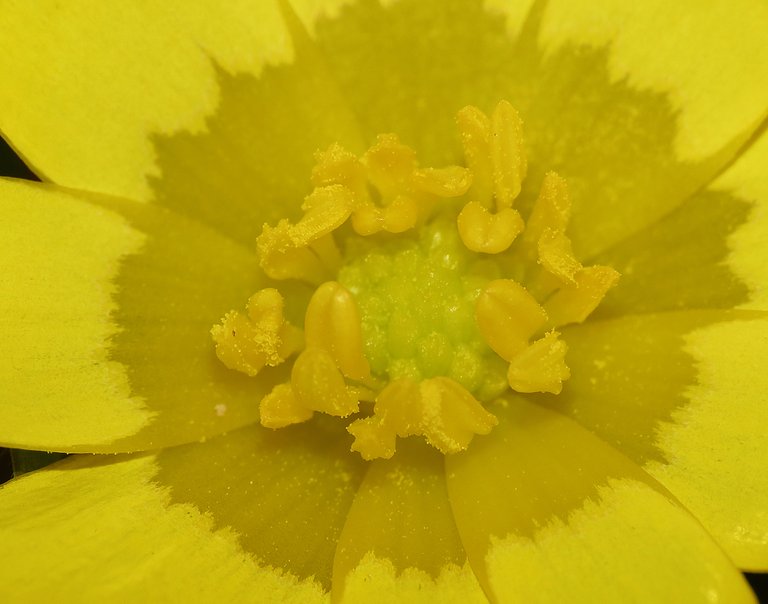
Here you can take another, more up - close look at the lovely yellow flower.
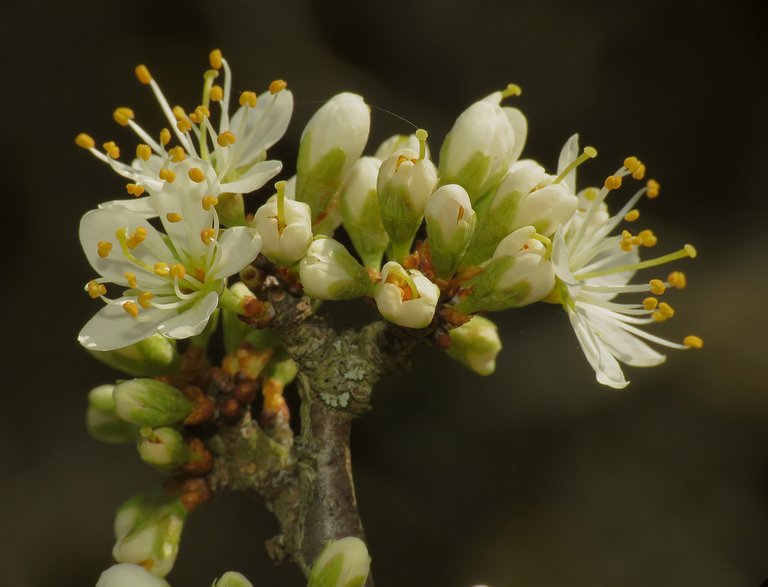
These are the Blackthorn flowers ...
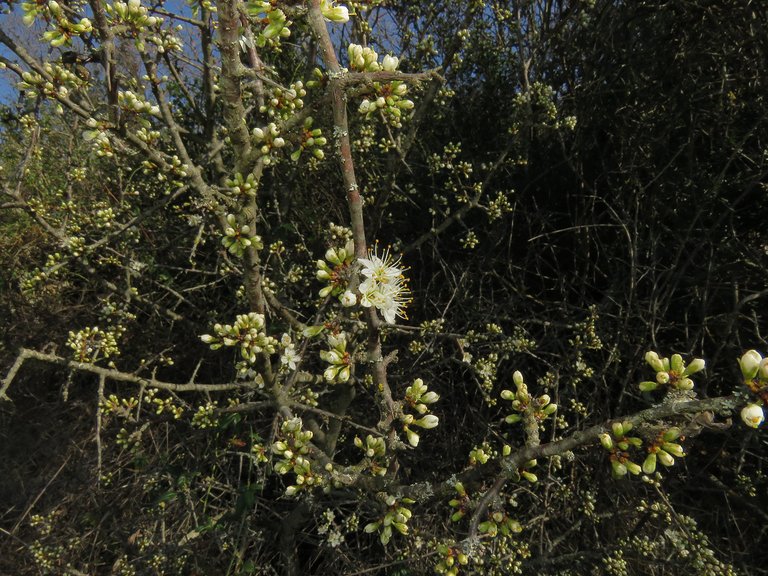
... Prunus spinosa is the scientific name of the species ...
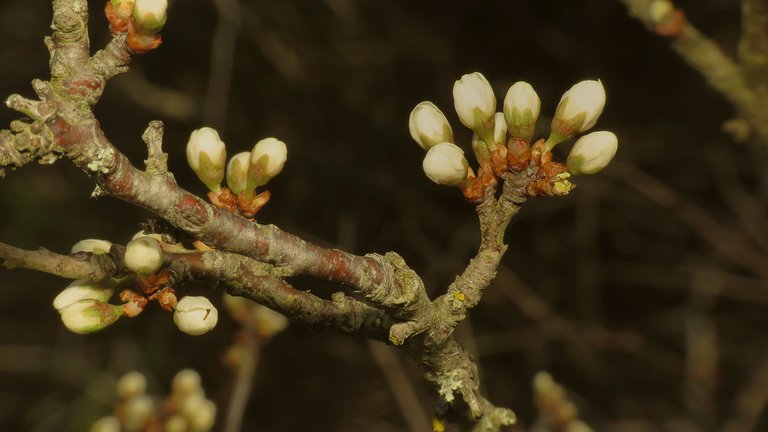
... these small trees grow along the edges of the meadows ... or sometimes, in groups in the middle of the meadow, like islands in the sea of grass.
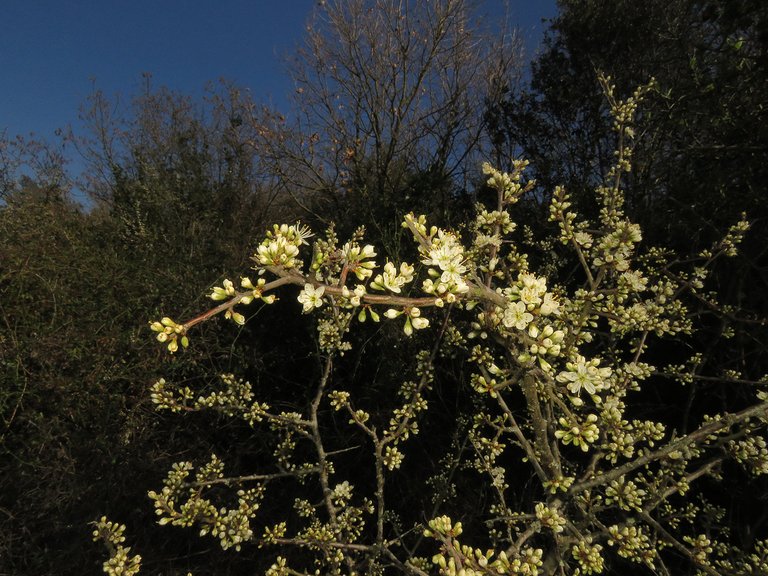
At this point, some branches had a few completely developed flowers ...
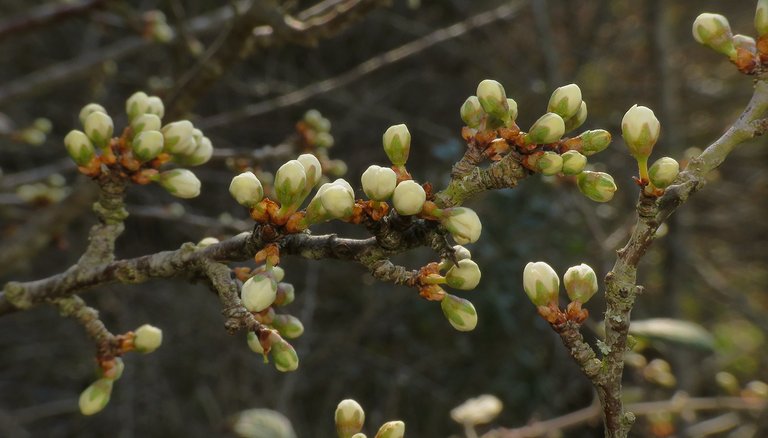
... but the trees were mostly covered with buds. Blackthorn can provide a high quality wood and the fruits are edible, although not very tasty compared to juicy cultivated fruits we are used to.
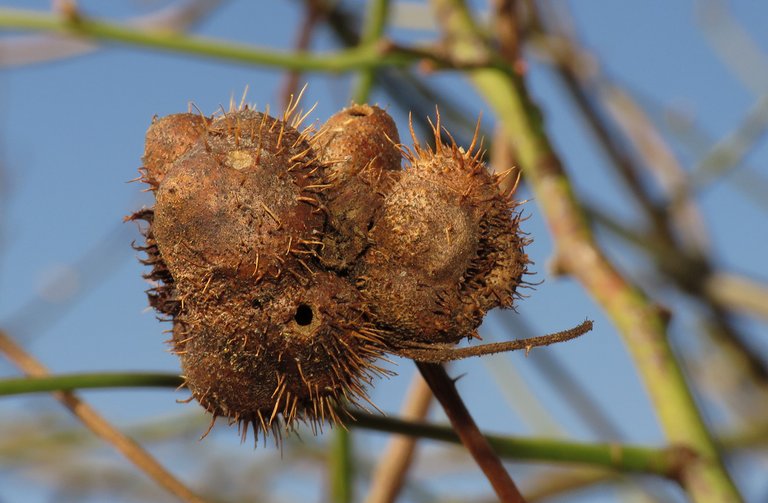
On the nearby Wild rose (Rosa canina) shrub I found this interesting structure ...

... a work of some wasp ... I don't know which species exactly.

This is some weevil ... a beetle from the large and varied Curculionidae family ...
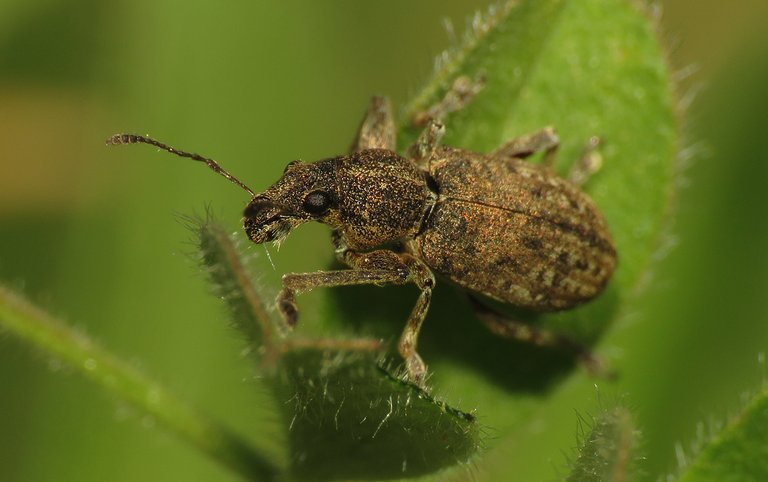
... I can't tell you the exact species because quite a few very similar species live here in the area ...
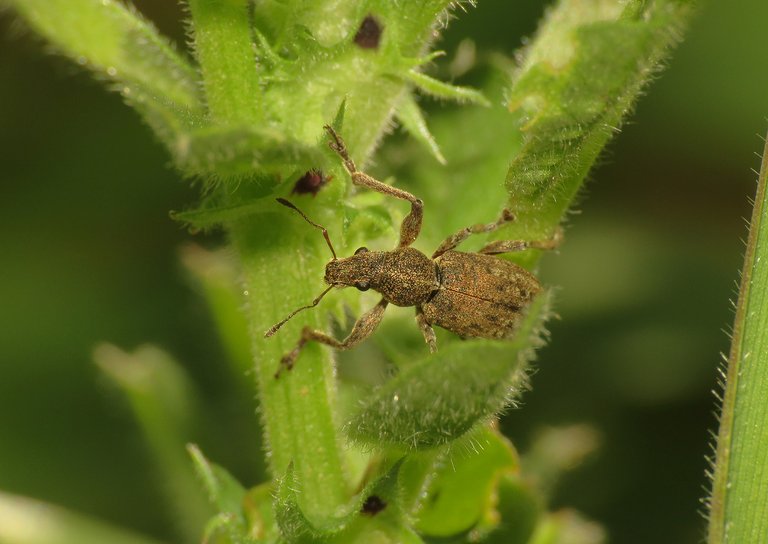
... so, for an amateur like me, finding out the exact species it's a very difficult task.
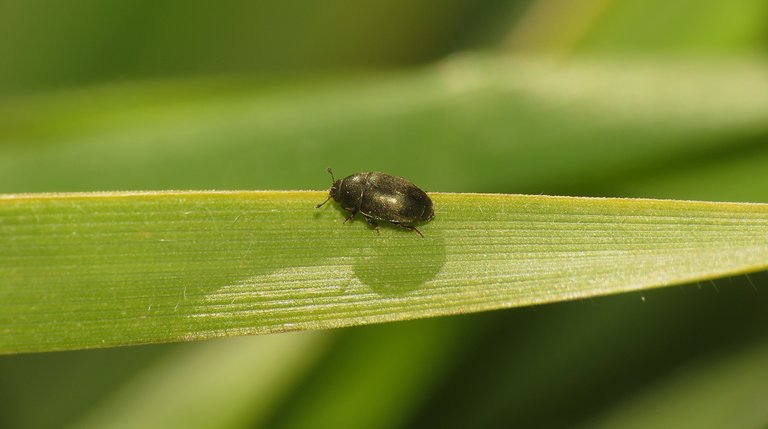
This tiny black dot on the green blade of grass ...
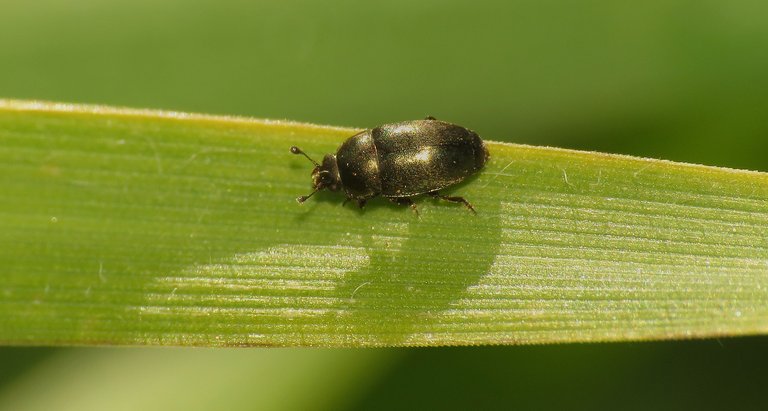
... it's the very common and widespread Brassicogethes aeneus pollen beetle.
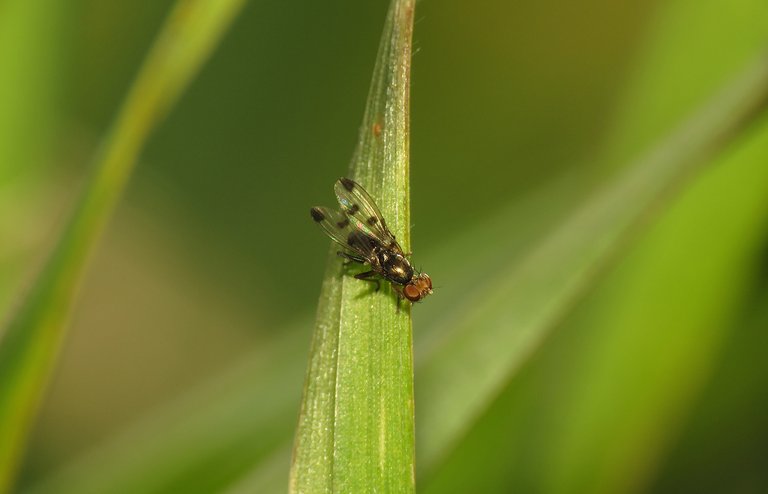
This minuscule fly ...
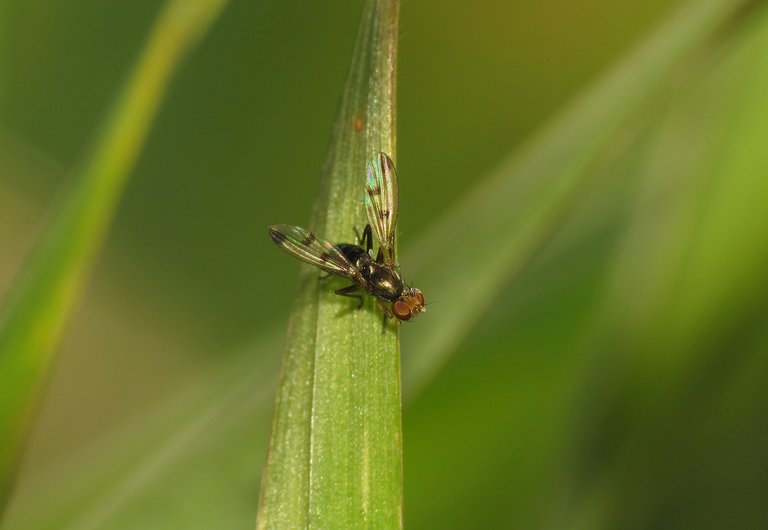
... was signaling something with her wings.
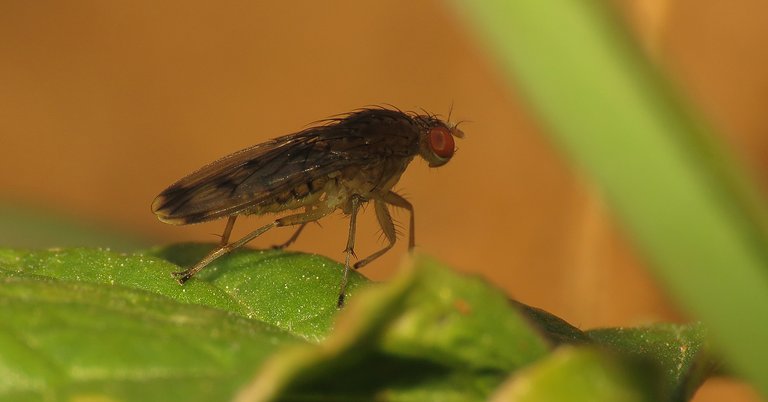
This, considerably bigger fly, was just resting on some leaf ...
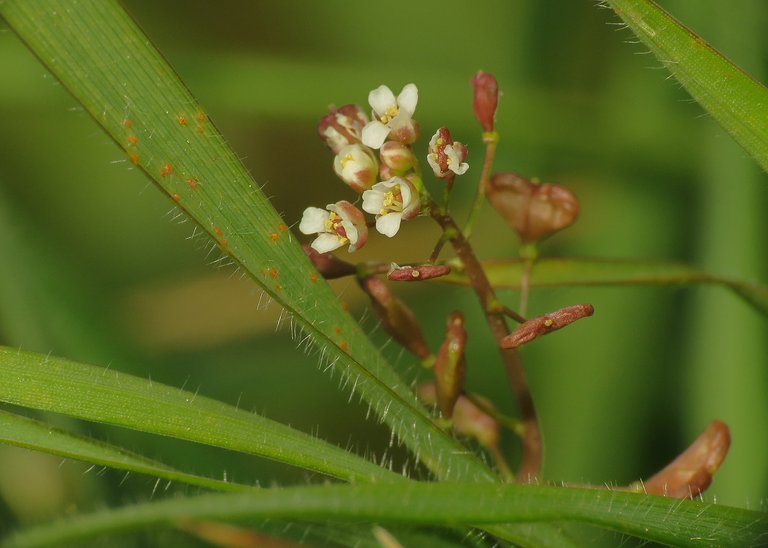
... and now ...
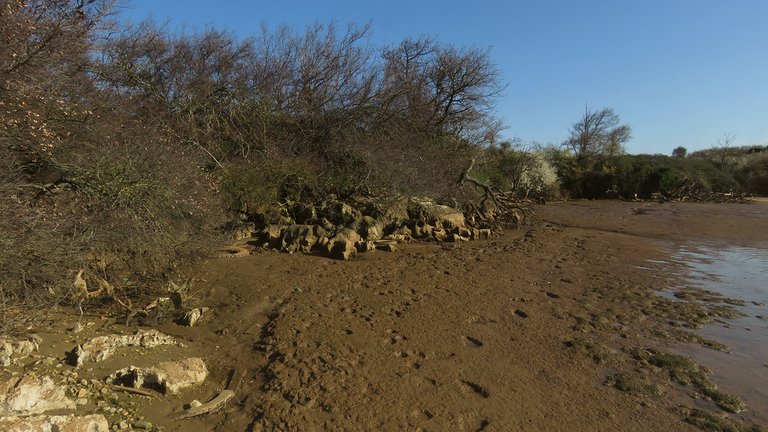
... with the last look at the muddy bay ...
... and this daisy peeking through the grass ... it’s time to end this post ... as always here on HIVE, the photographs are my work - THE END.
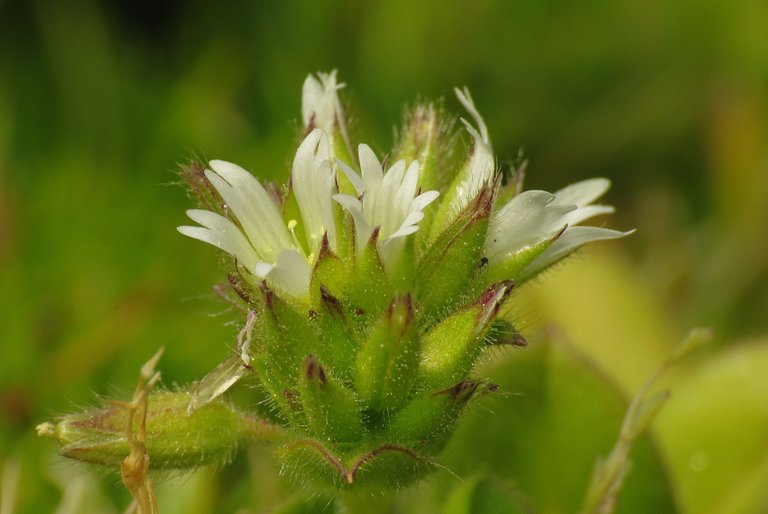
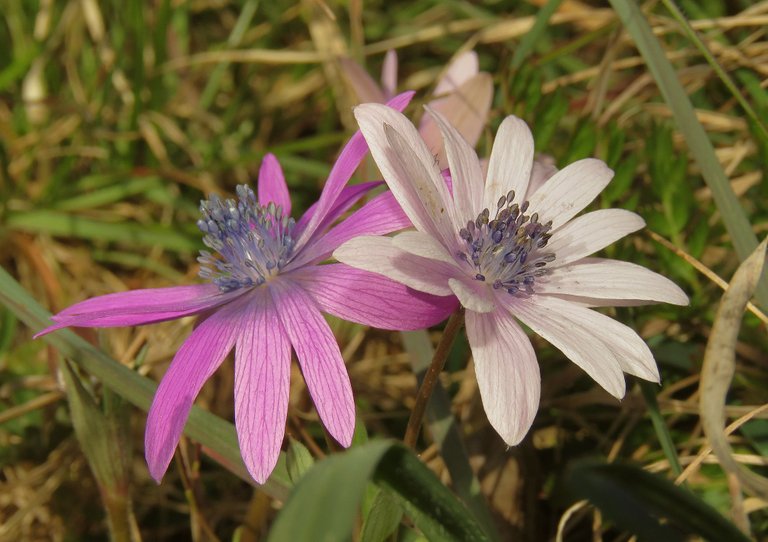
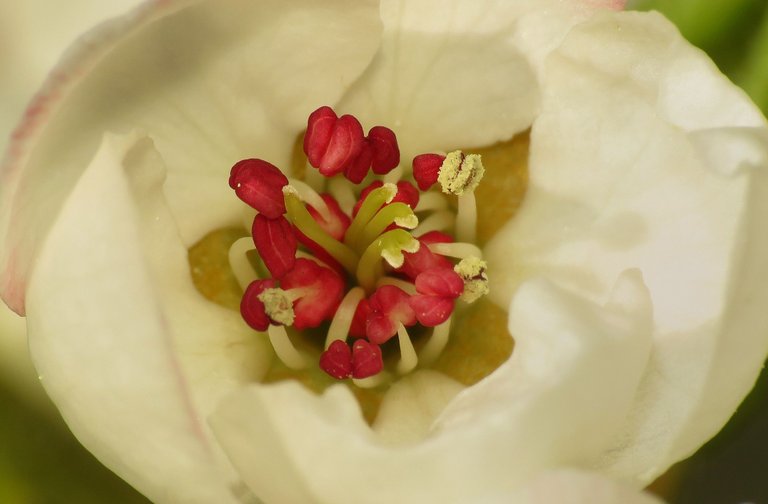
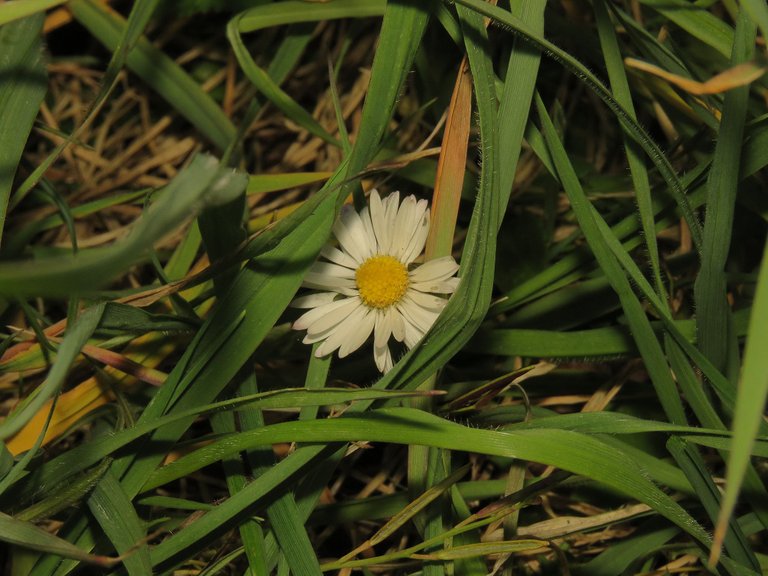
!WINE
Congratulations, @siphon You Successfully Shared 0.100 WINE With @borjan.
You Earned 0.100 WINE As Curation Reward.
You Utilized 1/3 Successful Calls.
Total Purchase : 24816.918 WINE & Last Price : 0.290 HIVE
HURRY UP & GET YOUR SPOT IN WINE INITIAL TOKEN OFFERING -ITO-
WINE Current Market Price : 0.270 HIVE
Cheers :)
Some nice collection of photos. I like it.
Got to give some LUV for the plant with the heart-shaped leaves. !LUV 1
Command accepted!
Hey @borjan, you were just shared some LUV. With at least 5 LUV in your wallet, you can give 3 LUV per day, for free. See the LUV tokens in your wallet at https://hive-engine.com or learn about LUV at https://hive.blog/@luvshares
!jeenger
!invest_vote
!jeenger
@cervisia denkt du hast ein Vote durch @investinthefutur verdient!
@cervisia thinks you have earned a vote of @investinthefutur !
Your contribution was curated manually by @cervisia
Keep up the good work!
wow !!!! now thats how to make a post with photos! beautiful share thank you!
Thanks :)
wow how beautiful this flower looks very attractive and amazing .... cool !!!
:) Yes, plants have amazing shapes and colors. Sometimes I forget to photograph them while chasing insects, but there is really a lot to photograph in the plant kingdom ... and it is easier :D plants don't run.
Beautiful stuff! May I ask where do you live? You seem to have much the same vegetation and insects that we have here in Israel :)
I'm in Croatia, Istra Peninsula on the Adriatic Sea ... :) watching your posts right now, yes, the flowers and butterflies look familiar.
Oooh interesting, thats a beautiful area! a friend visited there a few years back and took amazing photos and was amazed by how nice everything was.
maybe one day ill come visit :)
Amazing photography of all these plants and insects crystal clear.
Thanks :)
A nature that is very amazed by the sight of this living creature that you present. I am very happy to be able to see it so real with the accurate and luxurious images shot by Mr.@borjan
Thanks :)
A wonder of nature, that plant species that has a heart-shaped part is quite unusual, it must be typical of your region or perhaps of the European continent. As usual the photos you share with us are fascinating, I like to appreciate the biological diversity of other countries. Greetings from Venezuela my friend, success!
Thanks :) glad you like these photo reports from my area. I also enjoy watching and reading about flora & fauna from Venezuela and other parts of the world that are far and exotic from my point of view, it's a great exchange of amazing details from the natural world. Many species are left out of big production documentaries, so you can often see them only from people on the platform like this.
Yes, the Shepard's Purse, the plant with little hearts on it, is very common and widespread throughout all Europe.
From the first delightful ♡ photo to the last image, I thoroughly enjoyed seeing all of your Nature visuals as well as the outdoor therapy session!
Have a good rest of the week! @borjan
Thanks :) Have a great weekend